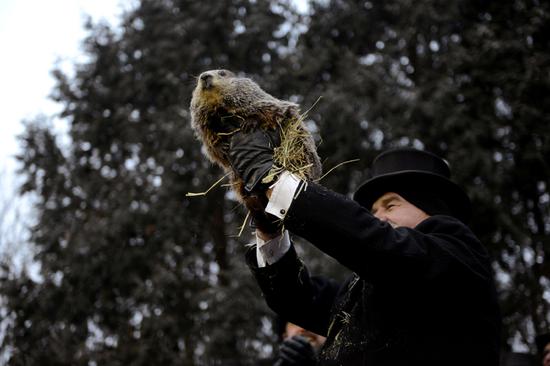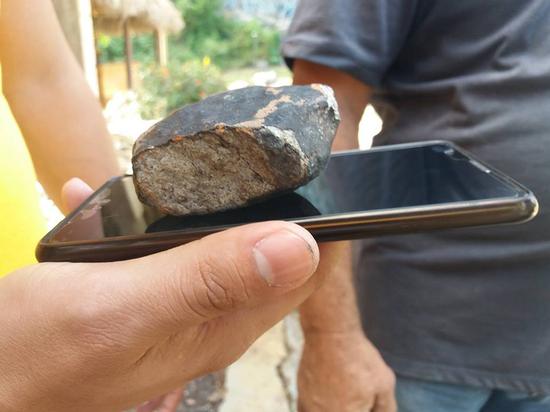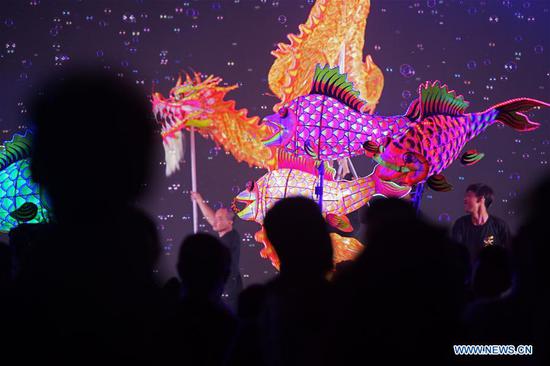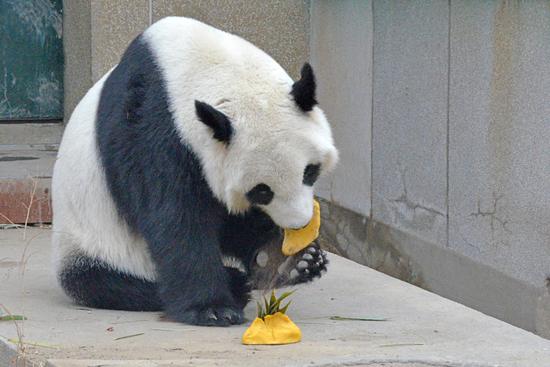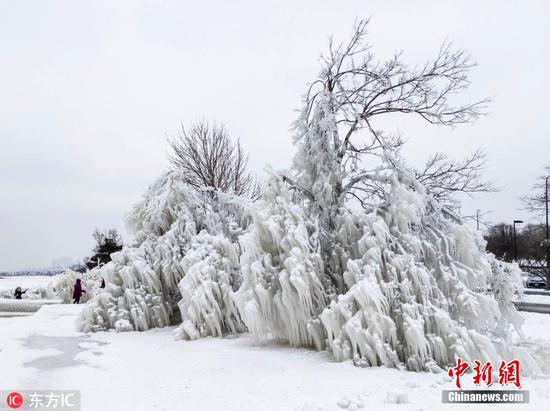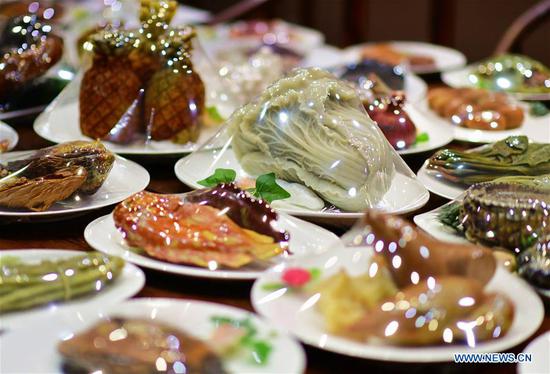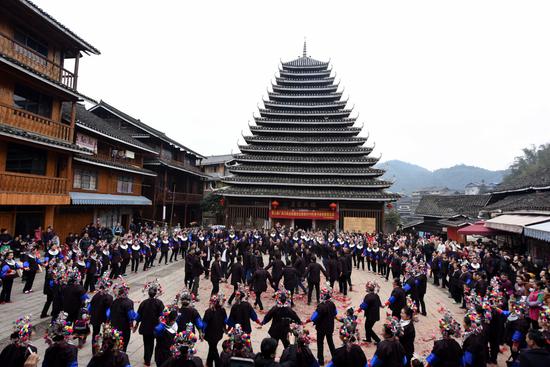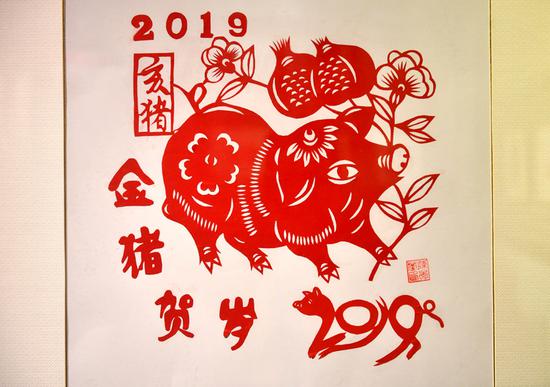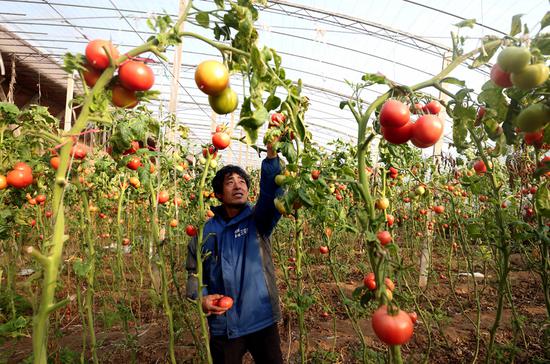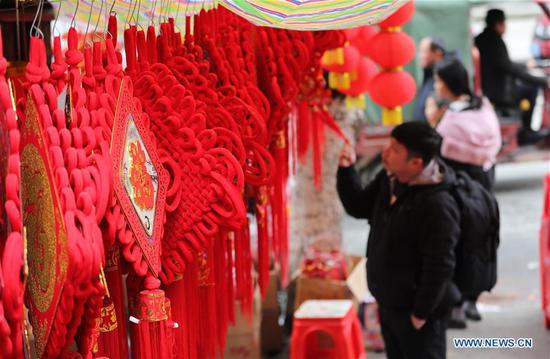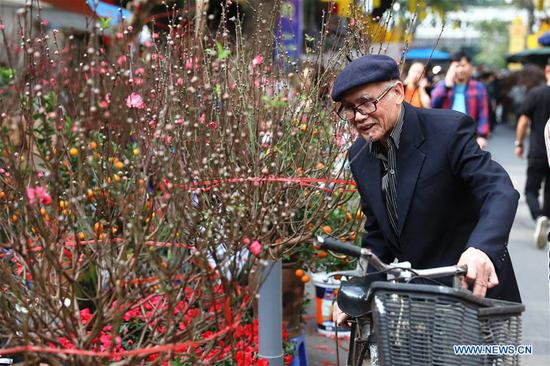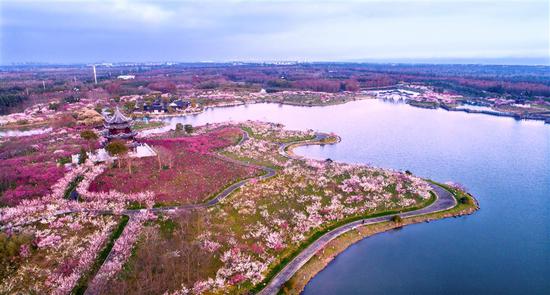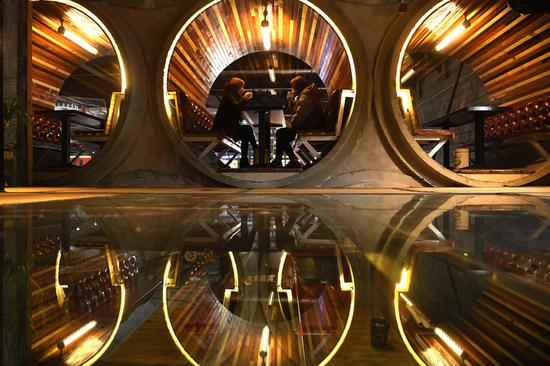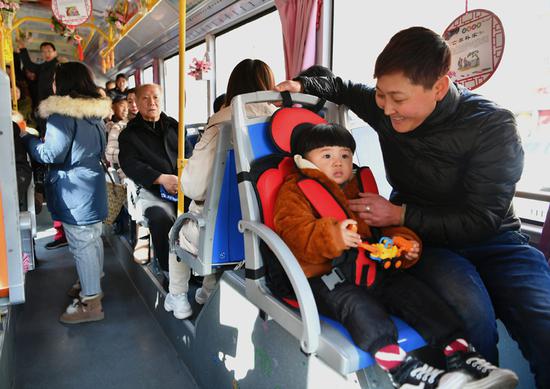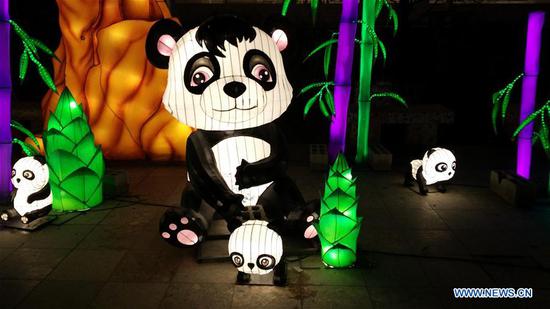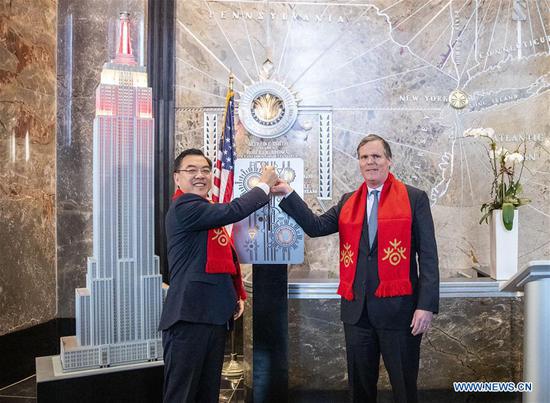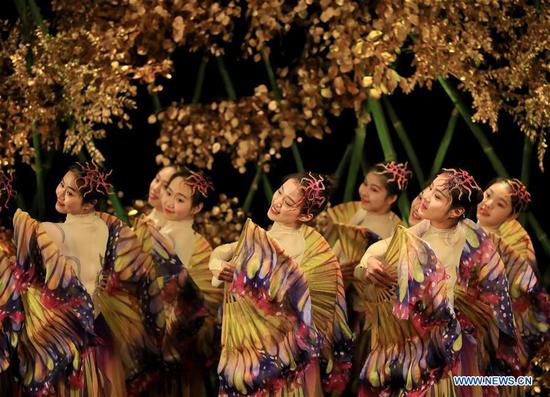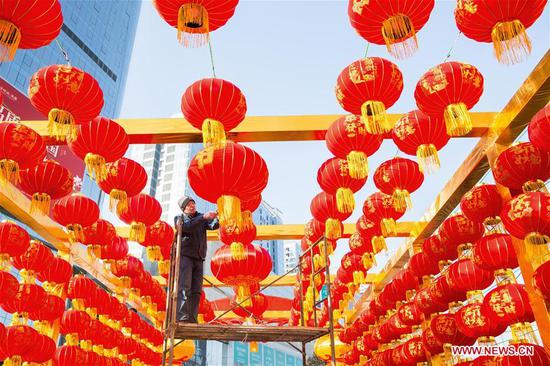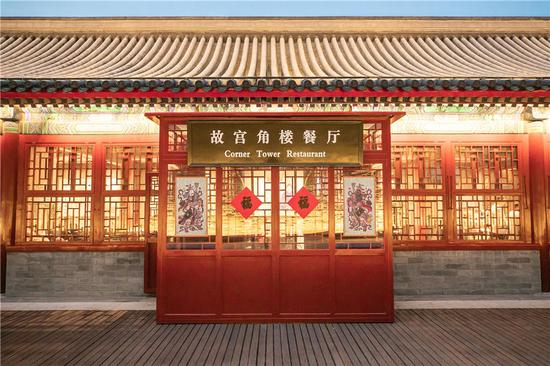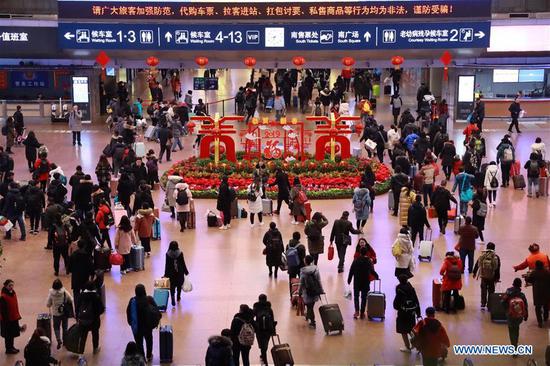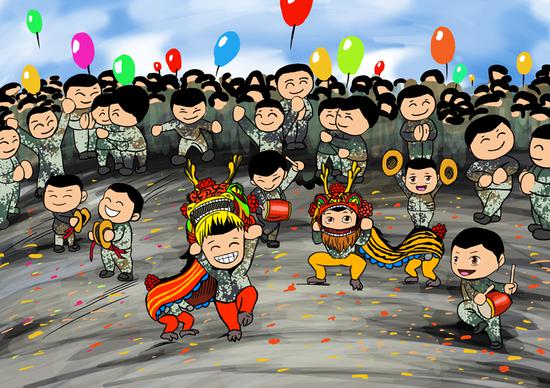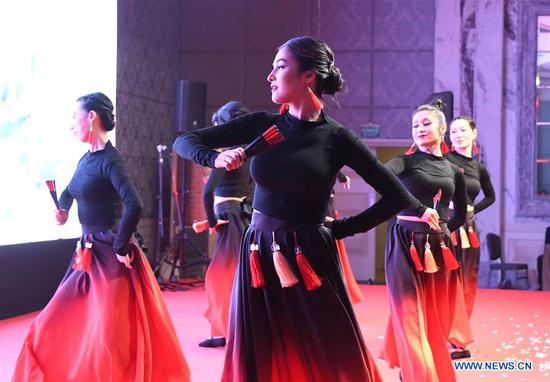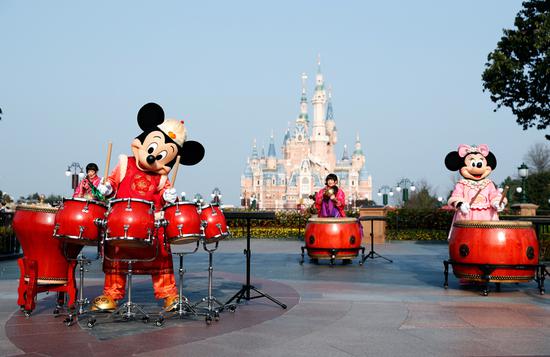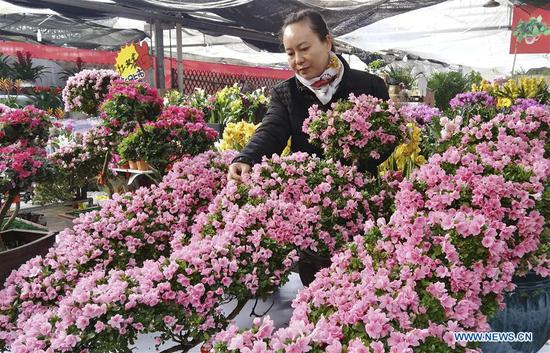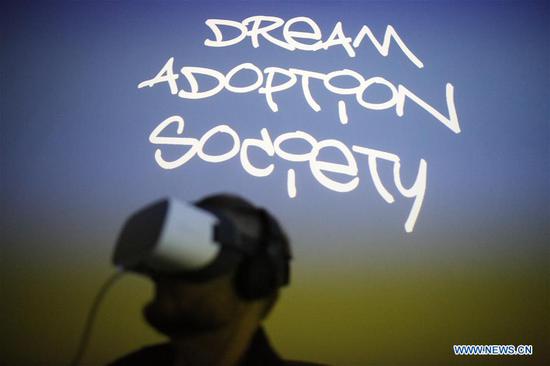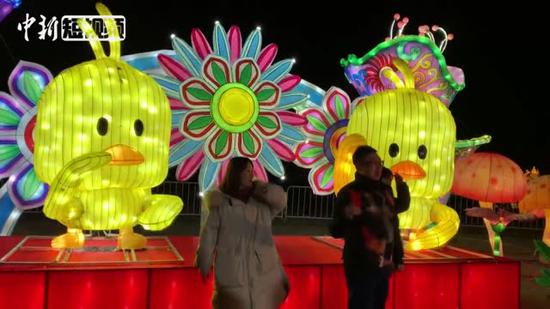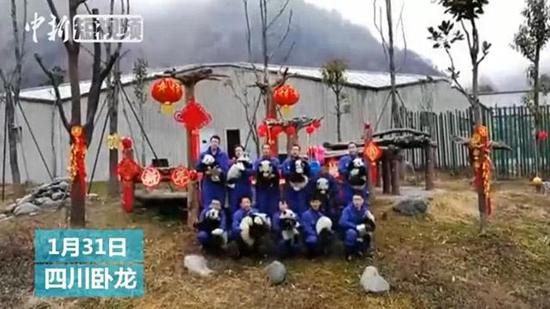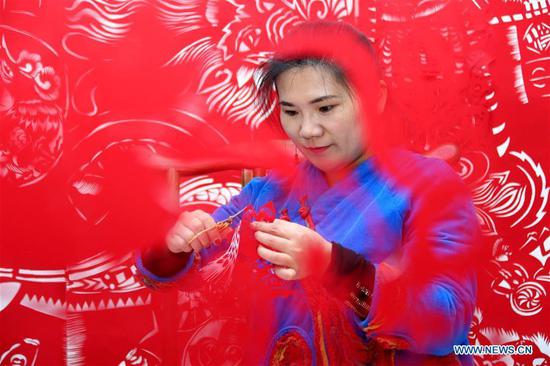
Folk artist Shi Hongxia creates a pig-themed paper cutting artwork at home in Tengzhou City, east China's Shandong Province, Jan. 31, 2019. (Xinhua/Sun Zhongzhe)
Editor's note: Han Hua is a fellow at Chong Yang Research Institute for Financial Studies at Renmin University of China. The article reflects the author's opinion, and not necessarily the views of CGTN.
Chinese Spring Festival is around the corner. Thanks to social media platforms like WeChat and other instant messaging apps, you are surrounded by messages conveying well wishes and happy thoughts ahead of the Year of the Pig, or you yourself will select from a vast collection of Chinese New Year emojis to convey positive messages to friends and relatives.
Why is Spring Festival still so important in the new Chinese era? There are three keywords: home, beginning and evolution.
Spring Festival represents the reunion of family. In other words, it is the time for Chinese people to go back to their physical and/or spiritual home.
This year, it is estimated that 400 million trips will be made by Chinese people during the Spring Festival holiday, including seven million outbound trips. Compared with the past, Chinese people have more ways to return "home" where family members are, be it their birthplace, a scenic city or a resort where family members choose to get together. Unlike the other trips made by Chinese people throughout the year, the Spring Festival trips are closely connected with home and family. Otherwise, you are regarded homeless or heartless.
And given the many choices Chinese have now, home is of both spiritual and physical meanings where members of the extended family reunite to distribute red packets, share personal stories of the year, and wishes for better luck in the new year. So when you hear a Chinese person saying they're "going home" during the Chinese New Year holiday, you can let your imagination run wild as to what "home" in this context means as the term has evolved over time.
For many Chinese people, the Lunar New Year is the beginning of a new start. As the occasion usually falls between the end of January and end of February depending on each lunar year calendar, it is rather funny that during the whole of January Chinese people say "let's wait until the new year," or "the new year is coming," which turns the entirety of the month into a prelude for Chinese resolutions.
The tradition is due to the agricultural history of the Chinese culture, when farmers planted seeds after the Lunar New Year began. This shows that Chinese people honor nature and pray in awe of Mother Nature by celebrating the New Year in the most significant way – a whole month, or even longer. In the past, sacrificial ceremonies were the most important part during the flurry of celebratory activities, and with time, they've given rise to other ways to mark the occasion.
With regard to the evolution of the tradition, Chinese are the most creative people in combining old and new. While we are keeping a lot of traditions such as cleaning houses, eating dumplings, giving red packets to the younger generation, and visiting temples, we are also open to modern ways of celebration, which are actually enhancing the tradition in multiple ways: electronic red packets were created in the wake of 4G connectivity and have surpassed the traditional way of putting cash in red envelopes in transaction volume, according to Alipay and WeChat. This in return is leading to more traditional envelopes being created to encourage young people to pay tribute to tradition by using physical wrappers.
And temple fairs are no more about dragon dances, lanterns, and folk performances. Ice and snow carnivals with real penguins are held in the north, while food festivals with exotic cuisines or winter-themed and whimsical lantern shows are organized in the south.
One such case is the 600-year-old Forbidden City in Beijing organizing a 3D show to demonstrate how emperors celebrated their Chinese New Year in the past, while selling cosmetics including lipsticks and eye shadows in colors matching the Year of the Pig.









